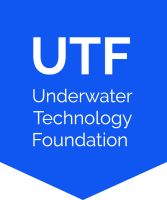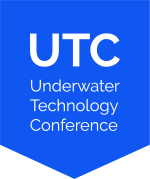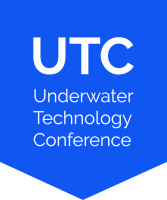

Photographer: Ole Jørgen Bratland / ©Equinor
Equinor’s leap in the energy transition
Subsea operations to reduce CO2 footprint
Over five decades, we have witnessed Equinor’s commitment to pioneering innovation and technology. Subsea operations play an important role in reducing the carbon footprint of the energy industry. Equinor is actively exploring ways to make subsea production operations more sustainable and environmentally friendly.
Producing energy with low carbon footprint creates competitive advantages in bridging the gap between energy security, affordability and climate security. Equinor strives to achieve the world’s lowest emissions for oil and gas production. They aim to become a global leader in offshore wind energy, and a leading player in the European industry for carbon capture, transportation, and storage.
Low carbon footprint using subsea production system – Equinor as a thought leader in the industry
All electric subsea systems
Equinor started to implement subsea electric actuators more than 20 years ago instead of using hydraulic actuators and have been a great success. One of the largest ongoing technology development programs in the subsea industry are all electric Xmas tree valves. The all electric Xmas trees use electric actuators and controls to operate emergency shut- down valves and other equipment whereas traditional Xmas trees use hydraulic actuators on most valves. This almost eliminates the need for subsea hydraulic systems and reduces the amount of hydraulic fluid used. By using all-electric X-mas trees, Equinor can reduce costs and improve operational efficiency as well as reduce the environmental impact of its subsea operations.
Carbon capture and storage
When discussing the energy transition, carbon capture and storage (CCS) emerges as a prominent topic. However, Equinor has been at the forefront of CCS for over two decades, with Sleipner and Snøhvit being notable examples. Presently, Equinor and their partners are advancing the technology even further through the Northern Lights project.
CCS seem to be the only feasible solution to decarbonize areas like steel and concrete production. An important solution is to utilize the Norwegian Continental Shelf, and other offshore subsurface reservoirs, to store the CO2. Field developments with CO2 injection subsea wells will then be necessary. The CCS SURF solutions currently being applied are based on standard equipment used for the Oil and Gas industry, but to be commercially viable, there must be considerable cost reduction in which electrified SPS will be part of the equation.
CCS seem to be the only feasible solution to decarbonize areas like steel and concrete production. An important solution is to utilize the Norwegian Continental Shelf, and other offshore subsurface reservoirs, to store the CO2. Field developments with CO2 injection subsea wells will then be necessary. The CCS SURF solutions currently being applied are based on standard equipment used for the Oil and Gas industry, but to be commercially viable, there must be considerable cost reduction in which electrified SPS will be part of the equation.

Northern Lights illustration - CO2 capture
Illustration: Artbox / ©Equinor.
Northern Lights is completing he value chain
The Northern Lights Joint Venture is jointly owned by Equinor, Shell, and TotalEnergies. It functions as the transport and storage segment of the ‘Langskip’ project, which involves the collaboration of these companies with the Norwegian government to establish a complete value chain for CO2 capture, transportation, and storage. The ultimate objective of the Northern Lights venture is to emerge as a prominent provider for large-scale CO2 transportation and storage operations. The North Sea is projected to have a storage capacity of approximately 200 gigatonnes in the future. To provide context, a storage facility of this magnitude could effortlessly contain the current annual CO2 emissions of the EU for 50 years or more. The first electric Xmas tree to be installed on NCS will be on Northern Light phase 2. Phase one of the project will be completed in 2024 with a capacity of up to 1.5 million tonnes of CO2 per year.
Northern Light phase 2 ambition is to expand capacity by an additional 3.5 million tonnes to a total of 5 million tonnes, dependent on market demand. However, the receiving terminal, offshore pipeline, and the umbilical to the offshore template will be built to accommodate the additional volumes.
Northern Light phase 2 ambition is to expand capacity by an additional 3.5 million tonnes to a total of 5 million tonnes, dependent on market demand. However, the receiving terminal, offshore pipeline, and the umbilical to the offshore template will be built to accommodate the additional volumes.

Photographer: ©Equinor.
The Smeheia CO2 storage
The Smeaheia CO2 storage prospect, lies on the Horda Platform east of the Troll field, is considered to play a significant role for low carbon solutions. Building on more than 25 years of operations with safe CO2 storage on the Norwegian Continental Shelf, the Smeaheia project will be a major contribution to realise a European network for CO₂ transport and storage.
Record-low emissions from Johan Sverdrup
Johan Sverdrup stands as the third-largest oil field on the Norwegian continental shelf and serves as a critical energy provider to Europe. With the entire field now operational, it contributes to approximately 25 percent of Norway’s oil production while also boasting some of the world’s most meagre CO2 emissions for an oil field.
Globally, the production of each oil barrel results in an average emission of 17 kilograms of CO2. However, on the Norwegian continental shelf, this average is lowered to 9 kilograms, while at Johan Sverdrup, it reaches a record-low of 0.67 kilograms. The field is predominantly powered by clean Norwegian hydroelectricity, sourced from the shore.
Globally, the production of each oil barrel results in an average emission of 17 kilograms of CO2. However, on the Norwegian continental shelf, this average is lowered to 9 kilograms, while at Johan Sverdrup, it reaches a record-low of 0.67 kilograms. The field is predominantly powered by clean Norwegian hydroelectricity, sourced from the shore.

Photo: Render AS / ©Equinor
Troll Phase Three – increased gas for Europe
With roughly 40 percent of the gas reserves on the Norwegian continental shelf (NCS), the Troll field stands as a critical foundation for Norwegian gas production. The production of gas from the Troll field results in a reduction of pressure within the reservoir, which necessitates additional compression to facilitate the movement of gas through the pipelines to Kollsnes. To address this, four compressors have been installed on the A platform, which are powered via onshore sources. This has eliminated all carbon dioxide and nitrogen oxide emissions originating from both the installation and the onshore gas processing plant.
Equinor has made yet another oil and gas discovery in the vicinity of the Troll field located in the North Sea. This marks the eighth time that Equinor has discovered reserves in the region since 2019.
Equinor has made yet another oil and gas discovery in the vicinity of the Troll field located in the North Sea. This marks the eighth time that Equinor has discovered reserves in the region since 2019.

Photographer: Øyvind Gravås and Even Kleppa / ©Equinor
Charging at depth
Equinor is exploring a network of seabed charging stations to facilitate the reliable operation of resident underwater drones. Equinor has together with partners created a charging pad capable of servicing many different types of underwater drones. The company is actively striving to establish this technology as a industry standard .
Multiphase transport
The technology of long multiphasedistance transport enables the transportation of both oil and gas simultaneously from the seabed to a platform or an onshore installation. This innovation eliminates the need for constructing a new platform or floating processing host which would entail large costs.
Unmanned platforms
By using Equinor’s knowledge of subsea processing such as compressors and pumps that require little maintenance, Equinor has developed whole platforms that can be operated unmanned.
The wellhead platform Oseberg Vestflanken has already been established as the first entirely unmanned platform of its kind, providing valuable experience to the process of developing an entirely unmanned production platform.
The wellhead platform Oseberg Vestflanken has already been established as the first entirely unmanned platform of its kind, providing valuable experience to the process of developing an entirely unmanned production platform.
Floating offshore wind
Equinor is on a quest to become a global leader within floating offshore wind. The company´s cutting-edge expertise has accumulated over 50 years.

Photo: Jan Arne Wold / Equinor
Still searching for answers
Equinor is continuously searching for the best solutions for oil & gas developments and operations and to reduce the environmental impact and cost of the field developments. One of the main challenges in this regard is finding the most effective way to develop and operate new satellite fields using lean subsea building blocks that are easy to retrieve, less costly and more energy efficient such as subsea processing, e.g. subsea water removal, instead of having such processing equipment topside.
In addition to this challenge, Equinor is also focused on implementing a circular economy approach to its operations. This means looking for ways to reuse, recycle, or repurpose equipment and materials to reduce waste and minimize the use of natural resources. For example, Equinor is exploring ways to reuse equipment from decommissioned fields in new projects and is looking for opportunities to use alternative materials in pipelines and other subsea infrastructure.
Technology innovation will continue to play a key role for the energy transition.
In addition to this challenge, Equinor is also focused on implementing a circular economy approach to its operations. This means looking for ways to reuse, recycle, or repurpose equipment and materials to reduce waste and minimize the use of natural resources. For example, Equinor is exploring ways to reuse equipment from decommissioned fields in new projects and is looking for opportunities to use alternative materials in pipelines and other subsea infrastructure.
Technology innovation will continue to play a key role for the energy transition.

Photo: Arne Reidar Mortensen/ Equinor
Person shown in the image: Sverre Overå, Jonas Gahr Støre, Tom Georg Indrevik, Børre Jakobsen
Equinor will be present at UTC with a large team of senior and young professionals, and you will have the opportunity to arrange a meeting with the various Equinor specialists, Leading Advisors and Chiefs. Stay tune and book your time slot when the meeting booking system is up running.
Attendees can look forward to hearing more about low carbon solutions. The Northern Lights project and the first fully electric X-mas tree will be presented. They will address the challenges related to CO2 transportation. Carbon capture, storage and utilisation will be discussed, as well as subsea injection systems.
Attendees can look forward to hearing more about low carbon solutions. The Northern Lights project and the first fully electric X-mas tree will be presented. They will address the challenges related to CO2 transportation. Carbon capture, storage and utilisation will be discussed, as well as subsea injection systems.
Equinor’s latest projects includes:
- Troll phase 3 (increased gas to Europe)
- Halten Øst (increased gas from Halten)
- Irpa (increased gas from the Norwegian Sea to Europe)
- Askeladd Vest increased gas/LNG from the Barents Sea via Snøhvit/Melkøya
- Fram Sør increased oil extraction in the Troll area
- Breidablikk (increased oil from Tampen)
- Johan Sverdrup phase 3 (increased oil production)
- Northern Lights phase1 and 2
- Smeaheia for subsea CO2 storage
- Bay Du Nord (Canada)
- Bacalhau phase 1 og 2 (Brazil)
- BMC 33 (Brazil)

















